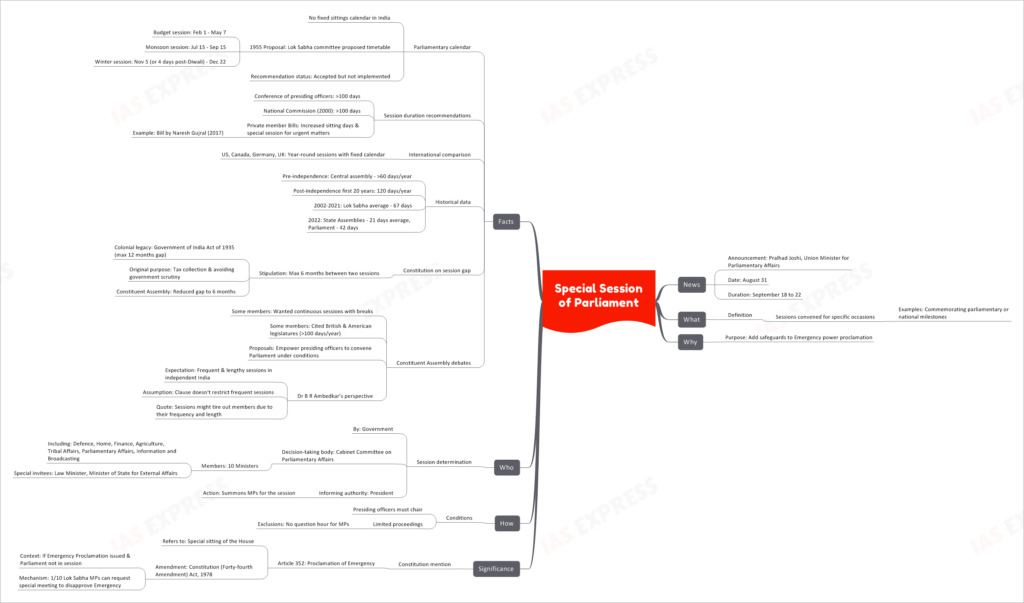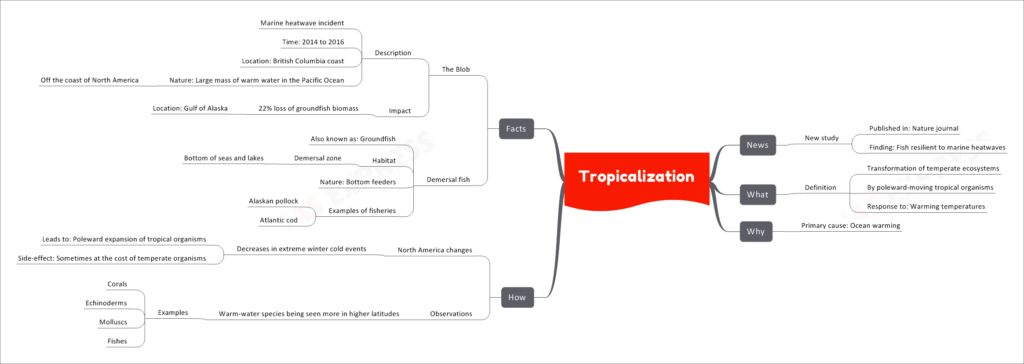[Newsbits] 02.09.2023

Panini
In a recent announcement, the Prime Minister urged people to share Sanskrit sentences on World Sanskrit Day. This article delves into the life and contributions of Panini, a revered Sanskrit scholar and grammarian, who has left an indelible mark on linguistics and the study of Sanskrit language.
The Identity of Panini
Sanskrit Scholar and Grammarian
- Panini is known as a distinguished Sanskrit scholar and grammarian.
- His groundbreaking work in linguistics has had a profound influence on the study of languages, particularly Sanskrit.
Panini's Major Contribution: Ashtadhyayi
Linguistics Text: Ashtadhyayi
- Panini's most significant contribution is the "Ashtadhyayi," an extensive and complex linguistic text dedicated to Sanskrit grammar.
- Structure: The work comprises eight chapters, containing over 4,000 grammatical rules that systematically define the structure of the Sanskrit language.
The Significance of Panini
Title: 'Father of Linguistics'
- Panini's pioneering work in linguistic analysis earned him the revered title of the 'Father of Linguistics.'
- His comprehensive approach to grammar laid the foundation for the study of languages and their structural intricacies.
Panini's Time Period and Residence
Time Period: 4th Century BC
- Panini lived during the 4th century BC, leaving an enduring legacy that has influenced linguistic thought for centuries.
Residence: Salatura in Gandhara
- Panini's residence was in Salatura, located in the region of Gandhara, which corresponds to present-day north-west Pakistan.
Intriguing Facts about Panini
Sanskrit's Other Name: Dev Vani
- The Sanskrit language is often referred to as "Dev Vani," which translates to the "Language of the deities."
- This reference highlights the sacred and divine nature of Sanskrit, a language that has been a cornerstone of ancient Indian culture and tradition.
Special Session of Parliament
A Special Session of Parliament, as announced by Pralhad Joshi, the Union Minister for Parliamentary Affairs, is set to take place from September 18 to 22.
Understanding the Special Session of Parliament
Definition
- Special Sessions are convened for specific occasions, often to commemorate parliamentary or national milestones.
Purpose: Adding Safeguards to Emergency Power Proclamation
- The upcoming Special Session aims to introduce safeguards to the power of proclaiming an Emergency.
Significance of Constitution Mention
- Article 352 of the Indian Constitution mentions the Proclamation of Emergency.
- The Constitution was amended by the Forty-fourth Amendment in 1978, allowing for a special sitting of the House under certain conditions.
Mechanism of the Special Session
Conditions for the Special Session
- Presiding officers of both Houses must chair the session.
- Limited proceedings are conducted during these sessions, excluding the usual question hour for Members of Parliament (MPs).
Who Decides the Session
- The government determines the need for a special session.
- The Cabinet Committee on Parliamentary Affairs, comprising 10 ministers and special invitees, takes the decision.
- The President is informed and issues summonses to MPs for the session.
Historical Context and Facts
Parliamentary Calendar
- India lacks a fixed sittings calendar for Parliament.
- A 1955 proposal by a Lok Sabha committee suggested a timetable, but it remains unimplemented.
Session Duration Recommendations
- Various bodies have recommended over 100 days for sessions.
- Private member Bills have been proposed for increased sittings and special sessions for urgent matters.
International Comparison
- Countries like the US, Canada, Germany, and the UK have year-round sessions with fixed calendars.
Historical Data
- Pre-independence, the Central Assembly had over 60 days of sessions per year.
- The first 20 years after independence saw around 120 days per year.
- Recent years have seen a decline, with Lok Sabha averaging 67 days in sessions.
Constitution on Session Gap
- The Constitution stipulates a maximum gap of six months between two sessions.
- This limitation was reduced from 12 months under the Government of India Act of 1935.
Insights from Constituent Assembly Debates
- Some members wanted continuous sessions with breaks.
- Comparisons were drawn with British and American legislatures.
- Dr B R Ambedkar shared differing views on session frequency and length.
Tropicalization
A recent study published in the Nature journal sheds light on the phenomenon of tropicalization, where marine ecosystems undergo transformation due to the migration of tropical organisms towards temperate regions in response to warming temperatures.
Understanding Tropicalization
Definition
- Tropicalization refers to the process by which temperate ecosystems are transformed due to the movement of tropical organisms towards higher latitudes.
- This transformation occurs as a response to rising ocean temperatures.
Primary Cause: Ocean Warming
- The primary driver of tropicalization is the warming of ocean waters due to climate change.
Mechanism of Tropicalization
Changes in North America
- As ocean temperatures rise, extreme winter cold events in North America are decreasing.
- This leads to the poleward expansion of tropical organisms, sometimes displacing temperate organisms.
Observations
- Warm-water species are increasingly observed in higher latitudes, indicating the spread of tropical organisms to temperate regions.
- Examples of species undergoing this migration include corals, echinoderms, molluscs, and various types of fishes.
Notable Facts and Incidents
The Blob: Marine Heatwave Incident
- "The Blob" was a marine heatwave incident that occurred from 2014 to 2016 along the British Columbia coast and off the coast of North America in the Pacific Ocean.
- It was characterized by a large mass of warm water.
- Impact: This heatwave led to a 22% loss of groundfish biomass in the Gulf of Alaska, affecting species vital to local ecosystems and fisheries.
Demersal Fish (Groundfish)
- Also known as groundfish, demersal fish inhabit the demersal zone, which is the bottom of seas and lakes.
- They are bottom feeders and play a crucial role in marine food chains.
- Examples of demersal fish include Alaskan pollock and Atlantic cod, which are important fisheries.
Tiger Mosquito
Paris, the capital city of France, has taken a significant step by fumigating its surroundings for the first time. This action aims to curb the spread of disease-carrying tiger mosquitoes, which made their initial appearance in France back in 2004. The move comes after years of battling the menace of tiger mosquitoes, especially in the southern regions of France.
Understanding the Tiger Mosquito
Scientific Identity
- The tiger mosquito, scientifically known as Aedes albopictus, is the focus of this effort to control its population.
Distinctive Features
- These mosquitoes are characterized by distinctive white bands on both their legs and bodies.
- Their bodies are long and segmented, and they have paired wings.
Feeding Behavior
- Tiger mosquitoes are known to be active during the daytime, as well as during the periods of dusk and dawn.
- They are aggressive feeders and pose a threat to human health due to their biting behavior.
Significance of the Tiger Mosquito
Invasive Species
- The tiger mosquito is considered an invasive species in many regions where it has been introduced.
Disease Transmission
- These mosquitoes are notorious for their capability to transmit several dangerous diseases, including:
- Eastern Equine Encephalitis (EEE)
- Zika virus
- West Nile virus
- Chikungunya
- Dengue fever
Distribution and Spread
Origin and Tropical Habitat
- The tiger mosquito originates from tropical areas of Southeast Asia.
Expansion in Europe
- The spread of tiger mosquitoes in Europe has been linked to climate change, which has created favorable conditions for their expansion.
- The expansion of tiger mosquitoes across Europe has been rapid, with their presence becoming more prominent since the beginning of this century.
- Notably, tiger mosquitoes have been identified in countries such as France, Germany, and Switzerland.
Climate Factors
- Warmer weather associated with climate change shortens the incubation period for the eggs of these mosquitoes, leading to faster population growth.
- Milder winters fail to provide the cold temperatures necessary to suppress the mosquito population.
Paris Takes Action: The Importance of Fumigation
First-time Fumigation in Paris
- Paris has taken the significant step of fumigating its surroundings to control the spread of tiger mosquitoes.
- This action is motivated by the need to address the threat of disease transmission posed by these mosquitoes.
- The tiger mosquito's first appearance in France dates back to 2004, and the southern regions of the country have been grappling with their presence for years.
Comparative Challenges
- The southern parts of France, particularly susceptible to tiger mosquito infestations, have experienced fumigation efforts to combat this menace.
UN on Protecting Heritage Sites to Conserve Biodiversity
The United Nations' efforts to safeguard heritage sites for the preservation of biodiversity have gained prominence. A joint assessment released by UNESCO and IUCN sheds light on the critical role of UNESCO World Heritage sites in conserving biodiversity and the urgent need for action to address threats to these valuable locations.
Joint Assessment by UNESCO and IUCN
Released by
- UNESCO (United Nations Educational, Scientific and Cultural Organization)
- IUCN (International Union for Conservation of Nature)
Highlights of UNESCO World Heritage Sites
Home to Diverse Ecosystems
- These sites house an impressive array of biodiversity, including:
- 75,000 species of plants
- Over 30,000 species of animals, including mammals, birds, fish, reptiles, and amphibians.
Importance of Biodiversity Conservation
- These sites play a crucial role in conserving biodiversity, as they are home to around a fifth of all species globally.
- They contribute to meeting targets set by the Kunming-Montreal Global Biodiversity Framework (GBF).
Iconic Species Residences
- Many iconic species find their last refuge in these sites:
- One-third of the remaining elephants, tigers, and pandas reside here.
- At least one in ten great apes, giraffes, lions, and rhinos also inhabit these areas.
- Home to unique species like Javan rhinos, vaquitas (world’s smallest cetacean), and pink iguanas.
- More than half of populations of certain species like Sumatran rhinos, Sumatran orangutans, and mountain gorillas call these sites home.
Conservation Challenges and Urgency
Challenges Faced
- These locations are facing multiple challenges, including climate change and anthropogenic pressures such as:
- Agricultural expansion
- Infrastructure development
- Poaching
- Overexploitation of resources
- Proliferation of invasive species.
Urgency of Action
- Taking action is essential to save vulnerable species.
- With every 1°C rise in temperature, the number of species threatened by climate change doubles.
Recommendations and Coverage
Preserving Biodiversity
- The report recommends nominating all biodiversity-rich areas for World Heritage inscription, acknowledging their importance in conserving diverse ecosystems.
Coverage and Numbers
- Only 1% of Earth’s surface is covered by these sites, but they play a pivotal role in biodiversity conservation.
- There are currently 1,157 UNESCO World Heritage sites globally.
Cultural World Heritage Sites and Benefits
Ally in Biodiversity Conservation
- Cultural World Heritage sites also contribute significantly to biodiversity conservation.
- Around 20% of these sites are located in Key Biodiversity Areas, enhancing their conservation value.
Preserving the Relationship between Humans and Nature
- These sites help foster a deeper connection between humans and the natural world.
Water Resources and Economic Opportunities
- These sites contribute to catering to human water needs.
- They provide opportunities for people to earn a sustainable livelihood through various activities.
Government Action and Training Initiatives
Prioritizing Heritage Sites
- Governments are urged to prioritize UNESCO World Heritage sites in their National Biodiversity Strategies and Action Plans.
Crucial Training
- By 2025, all managers of World Heritage sites will receive training in climate change adaptation strategies.
- By 2029, all sites will have a climate adaptation plan in place, as announced by the Director-General of UNESCO on the 50th anniversary of the Convention in November 2022.
If you like this post, please share your feedback in the comments section below so that we will upload more posts like this.





